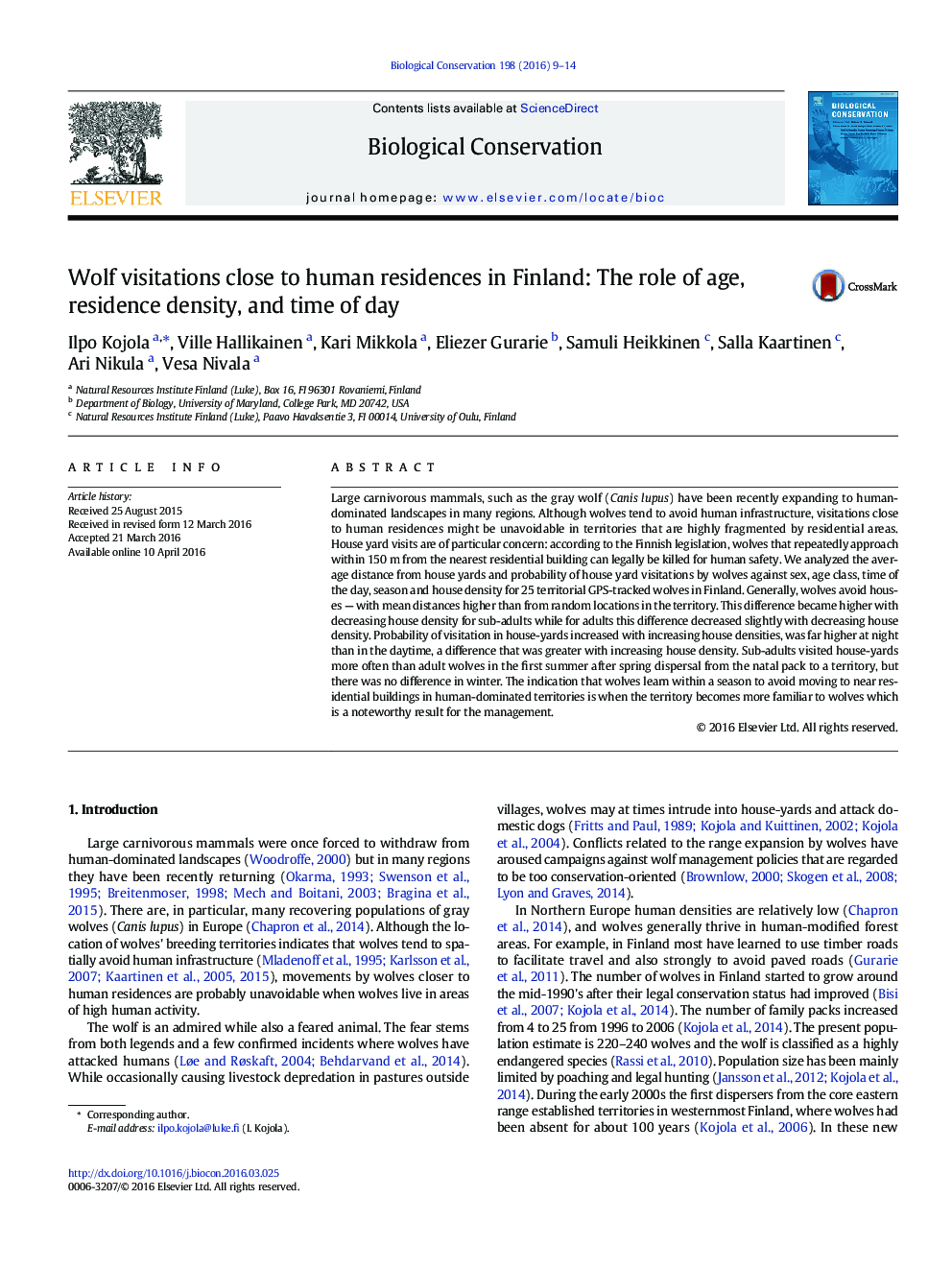| کد مقاله | کد نشریه | سال انتشار | مقاله انگلیسی | نسخه تمام متن |
|---|---|---|---|---|
| 4385012 | 1617903 | 2016 | 6 صفحه PDF | دانلود رایگان |
• Wolves avoid human residences.
• Visitations close to residences are most common in territories with high human density.
• Finnish wolves move near human residences only at night.
• Wolves appear to learn to avoid moving close to human residences.
Large carnivorous mammals, such as the gray wolf (Canis lupus) have been recently expanding to human-dominated landscapes in many regions. Although wolves tend to avoid human infrastructure, visitations close to human residences might be unavoidable in territories that are highly fragmented by residential areas. House yard visits are of particular concern: according to the Finnish legislation, wolves that repeatedly approach within 150 m from the nearest residential building can legally be killed for human safety. We analyzed the average distance from house yards and probability of house yard visitations by wolves against sex, age class, time of the day, season and house density for 25 territorial GPS-tracked wolves in Finland. Generally, wolves avoid houses — with mean distances higher than from random locations in the territory. This difference became higher with decreasing house density for sub-adults while for adults this difference decreased slightly with decreasing house density. Probability of visitation in house-yards increased with increasing house densities, was far higher at night than in the daytime, a difference that was greater with increasing house density. Sub-adults visited house-yards more often than adult wolves in the first summer after spring dispersal from the natal pack to a territory, but there was no difference in winter. The indication that wolves learn within a season to avoid moving to near residential buildings in human-dominated territories is when the territory becomes more familiar to wolves which is a noteworthy result for the management.
Journal: Biological Conservation - Volume 198, June 2016, Pages 9–14
